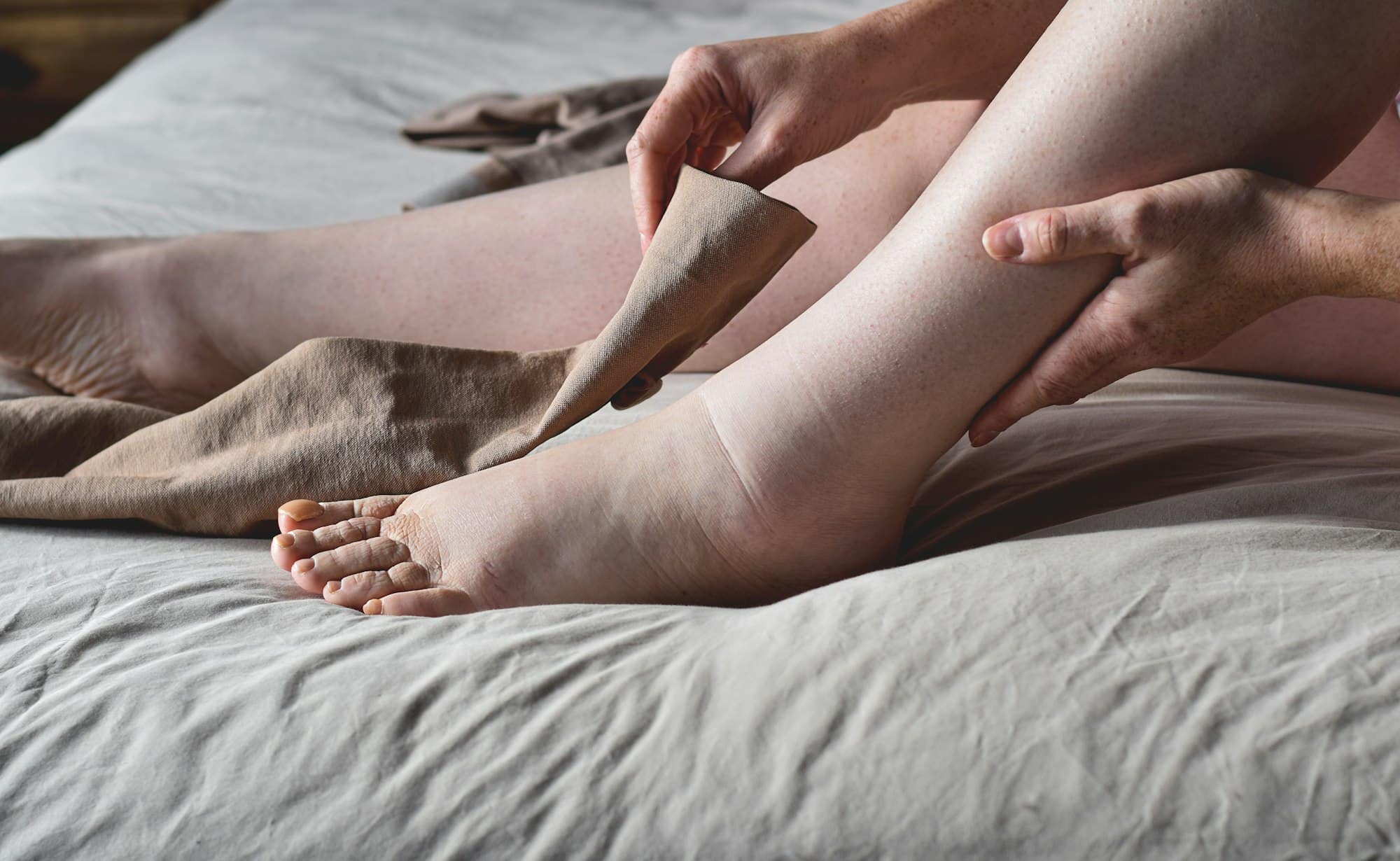What Are the Physiological Effects of Compression Garments on Post-Exercise Recovery in Sprinters?

The world of sports performance is ever-evolving, with athletes and their coaches continuously seeking methods to optimize performance and recovery. Recently, attention has turned to the use of compression garments in the post-exercise period. These garments have been purported to aid recovery by reducing muscle soreness, enhancing blood flow, and improving athletic performance. But what does the science say? This article delves into current studies and findings on the physiological effects of wearing compression garments post-exercise in sprinters.
The Science Behind Compression Garments
Compression garments are specially designed clothing that apply a certain amount of pressure to specific body parts. This pressure is measured in units called ‘cgs’ (centimeters of mercury). The goal of these garments is to enhance blood circulation to the muscles, assisting in the removal of waste products such as lactic acid, which is associated with muscle soreness.
A lire également : What’s the Role of Sleep Tracking Devices in Improving Rest Quality of Professional Volleyball Players?
Scholarly research on Google Scholar suggests that compression garments could indeed have a beneficial effect on post-exercise recovery. Various studies have indicated a reduction in muscle soreness and improved muscle strength recovery. However, the mechanisms behind these benefits are not fully understood. Let’s dive deeper into this scientific maze to find more concrete answers.
The Role of Compression in Reducing Post-Exercise Muscle Soreness
After a high-intensity workout such as sprinting, you might experience delayed onset muscle soreness (DOMS). The use of compression garments post-exercise might help reduce this soreness by promoting blood flow to the affected muscles.
A lire également : How Can Video Gaming Strategies Enhance Spatial Awareness in Rugby Union Tacticians?
The pressure exerted by the compression garments can increase venous return, this means more blood flows back to the heart. This in turn can enhance the removal of waste and inflammatory substances that are associated with muscle damage and soreness.
Research in this area, though still developing, points to promising results. A post on a scholarly Google research platform indicated that athletes who wore compression garments for 48 hours after intense exercise experienced less muscle soreness compared to those who didn’t.
Compression Garments and Improved Muscle Strength Recovery
How quickly an athlete recovers their muscle strength post-exercise is a key aspect of sports performance. The sooner an athlete can return to their peak strength, the sooner they can return to training or competition.
Studies suggest that wearing compression garments post-exercise might aid in faster recovery of muscle strength. The increased blood flow, as a result of compression, can enhance the delivery of nutrients to the muscles for repair and growth. Moreover, the removal of waste products can also be expedited, potentially speeding up the recovery process.
A scholarly Google post showed that sprinters who wore compression garments following an intense workout experienced a quicker return to their pre-exercise strength levels compared to those who didn’t.
Impact on Athletic Performance
Beyond recovery, you might be curious if wearing compression garments post-exercise can actually enhance your future performance. The potential of these garments to reduce muscle soreness and improve strength recovery may have a ripple effect on overall athletic performance.
Scientific findings on this subject have been a mixed bag. Some studies have reported significant improvements in performance, while others have shown minimal or no effects. The discrepancy could be due to various factors such as the type of exercise, the length of wearing the garments, and individual differences among athletes.
Nonetheless, the possibility of improved performance, coupled with the potential recovery benefits, might make compression garments an attractive option for sprinters.
Lower Body Compression Garments: A Focus on Sprinters
Most of the research on compression garments in sports has focused on lower-body garments such as leggings or socks. This focus is particularly relevant to sprinters, who rely heavily on their lower body muscles.
The enhanced venous return and reduced muscle oscillation provided by these lower body compression garments can be especially beneficial following high-intensity lower body exercise such as sprinting.
In conclusion, while the science behind the effects of compression garments post-exercise continues to evolve, current evidence suggests potential benefits in terms of reduced muscle soreness, improved strength recovery, and possibly enhanced performance. As always, individual response to such interventions can vary, and it’s recommended to try out compression garments in training before using them in competition.
Remember that these garments are not a magic bullet. They should be used as part of a comprehensive approach to recovery that includes proper nutrition, adequate sleep, and appropriate training.
The Potency of Compression Garments in Enhancing Blood Flow
The effectiveness of compression garments is closely tied to their ability to enhance blood flow. As explained earlier, they work by exerting pressure on certain parts of the body, thereby promoting venous return. Enhanced blood flow to the muscles aids in the speedy removal of waste products such as lactic acid that are a byproduct of intense exercise.
A study found on Google Scholar elaborates on this. It shows that wearing compression garments after intense exercise can significantly increase blood circulation. The study also suggests that increased blood flow can expedite the healing process, thereby reducing muscle soreness and aiding in quicker recovery of muscle strength.
However, it’s crucial to note that the effectiveness of compression garments in enhancing blood flow can be influenced by several factors. These include the level of compression (measured in ‘cgs’), the type of garment (for instance, tights, socks, or sleeves), the duration of wearing, and the individual’s physiological response.
Furthermore, the enhancement of blood flow is not only beneficial for post-exercise recovery but also for performance recovery. Improved blood circulation allows for better oxygen and nutrient delivery to the muscles, which may enhance athletic performance in subsequent workouts.
Nonetheless, more research is needed to fully understand the relationship between compression garments, blood flow enhancement, and athletic performance.
Compression Garments and Lower Body Recovery for Sprinters
When it comes to sprinters, the focus shifts to lower body recovery. Sprinting is a high-intensity exercise that heavily engages the lower body muscles, making them prone to exercise-induced muscle damage.
Compression tights or socks are common lower body compression garments. These garments are designed to apply pressure on the lower body parts, enhancing venous return and reducing muscle oscillation. This can be especially beneficial after high-intensity lower body exercises like sprinting.
A study found on Pubmed Google shows that sprinters who wore lower body compression garments after intense exercise experienced reduced muscle soreness and quicker return to pre-exercise strength levels. The study further suggests that these garments may enhance sprint performance at a later time point by reducing exercise-induced muscle damage and promoting muscle healing.
However, it’s worth noting that the effects of compression garments on lower body recovery can vary from person to person. The type of garment, the level of compression, the duration of wearing, and individual physiological responses all play a role.
Conclusion
The use of compression garments as a post-exercise recovery strategy in sprinters has gained significant attention in recent years. Current evidence from platforms like Google Scholar and Pubmed Google suggests that these garments can potentially reduce muscle soreness and improve muscle strength recovery. They may also enhance performance recovery by promoting blood flow and reducing exercise-induced muscle damage.
However, while these findings are indeed promising, it’s crucial to remember that compression garments are not a one-size-fits-all solution. The benefits can vary based on the type of garment, the level of compression, the duration of wearing, and individual responses.
Therefore, athletes and coaches are advised to incorporate compression garments as one component of a comprehensive post-exercise recovery strategy that includes proper nutrition, adequate sleep, and suitable training. Additionally, it’s recommended to experiment with these garments during training before using them in a competitive setting.
In the future, more research is needed to fully understand the physiological effects of compression garments on post-exercise recovery and performance in sprinters.
